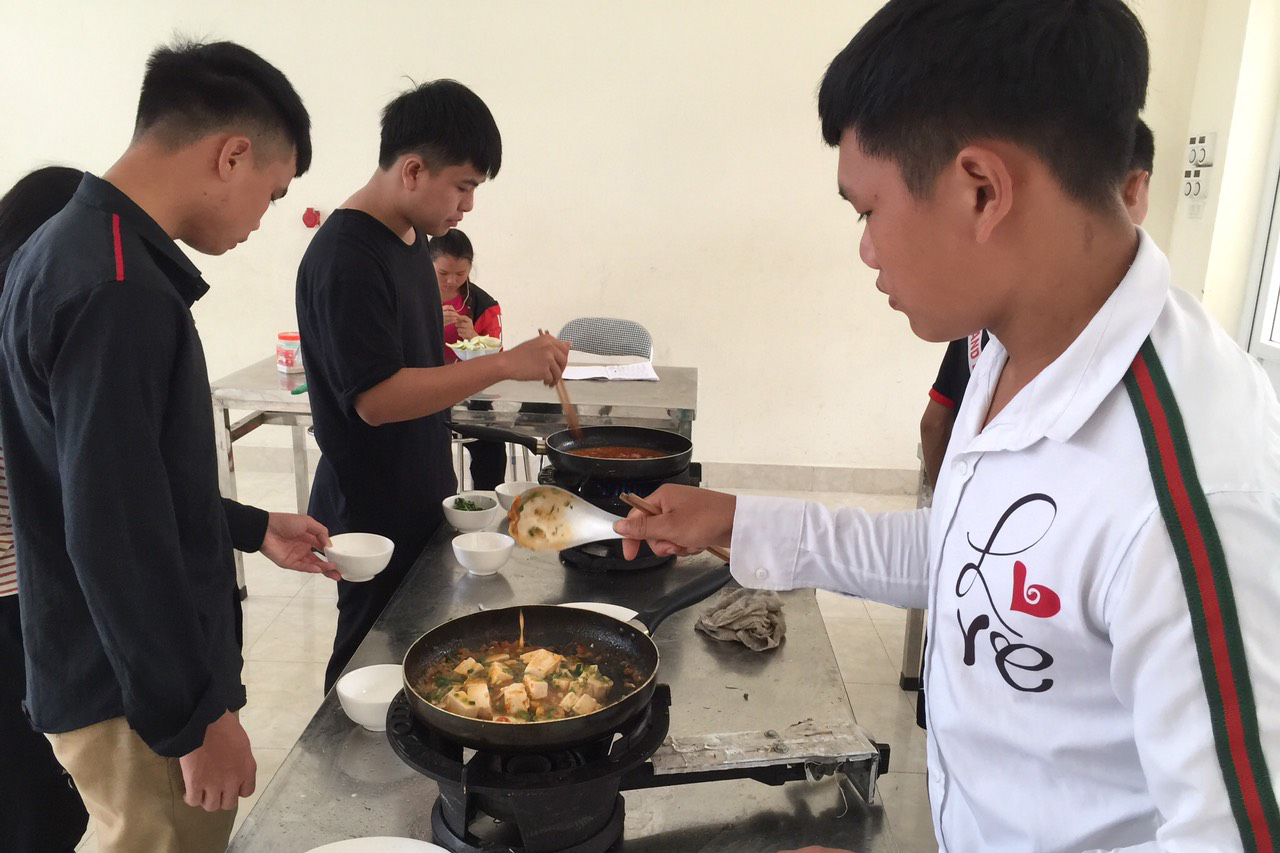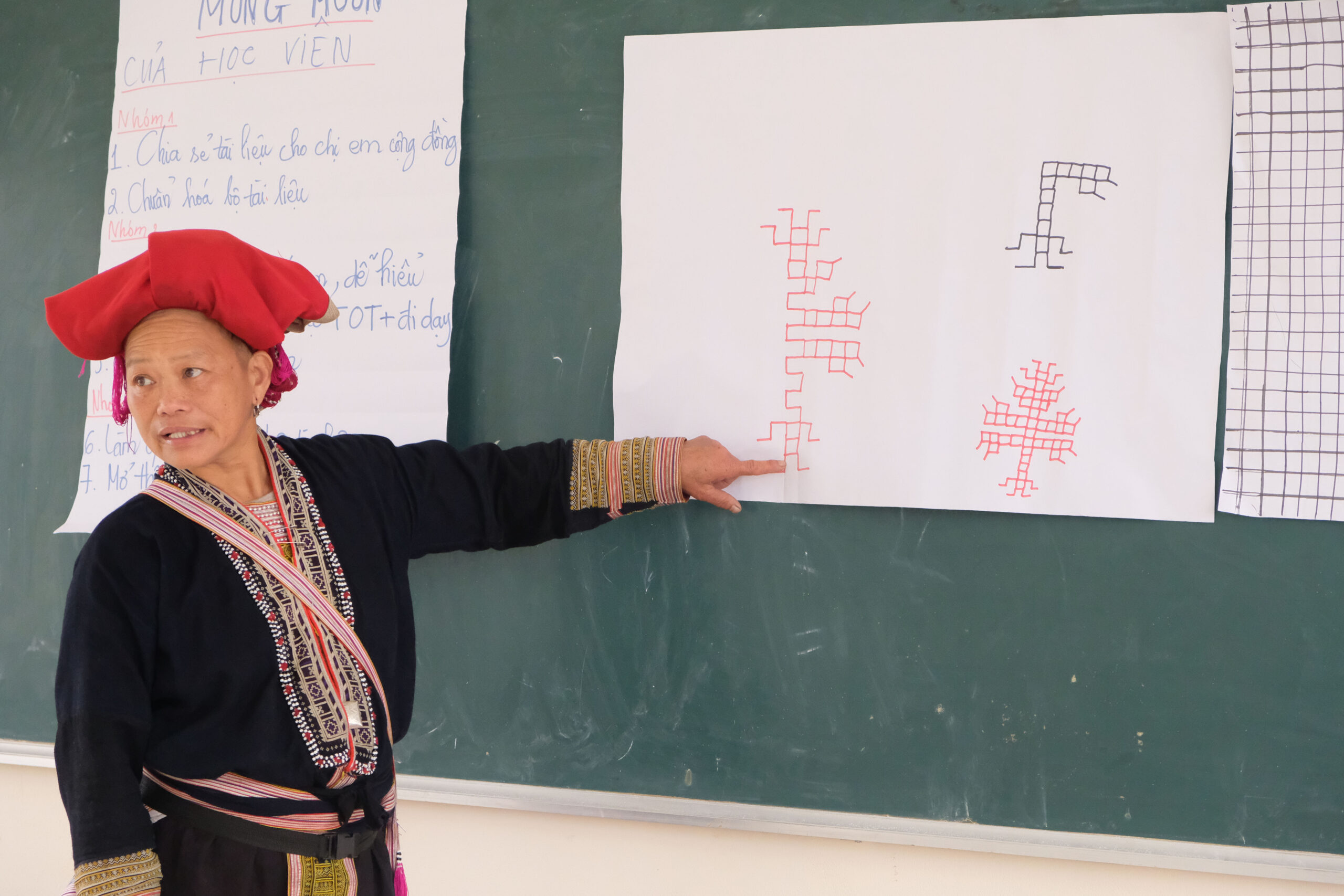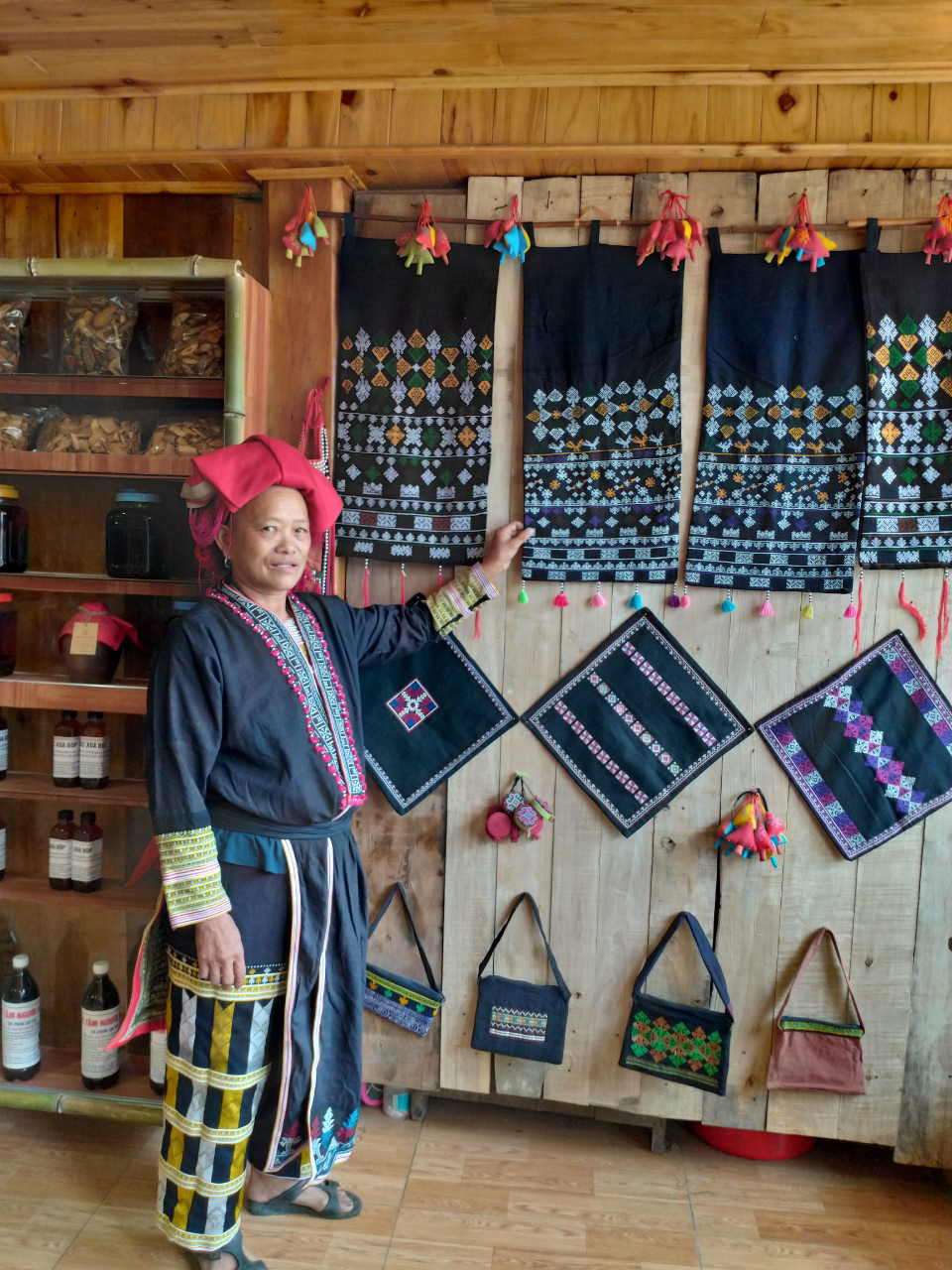In Lao Cai city, located in Vietnam’s northern mountainous province of the same name, cooking instructor Phạm Thị Biên Thanh loads up her motorbike with pots, pans and utensils and prepares herself for a long and bumpy ride to reach her next group of students.
In the rural and remote areas that Thanh travels to, access to equitable vocational education and careers counselling remains largely out of reach for the many ethnic minority populations living there. But with current vocational training reforms and a new National Gender Equality Strategy announced in 2021, Thanh and like-minded colleagues are determined to reduce the disparities between rural and urban populations, particularly rural women who remain the lowest educated and most likely to depend on subsistence farming.
Than’s mobile training teaches professional cooking skills to students from the Hmong, Dao, and Xa Pho ethnic groups. Each class typically lasts three to four months, with Thanh teaching in a village for three consecutive days per month. Travelling to villages is a challenge, Thanh said, particularly during the rainy season.
“Sometimes I have to stop on my way to wait for a flood to be over so that I can cross a stream,” she explained. “But it has been a rewarding experience, I am moved when local people travel or walk up to 20 kilometres from their villages to the communal house to attend my class.”
The classes teach untrained rural populations not only how to cook nutritious meals from local produce but also how to earn a living from the work. About three-quarters of Vietnam’s poor residents live in remote and rural areas like the villages to which Thanh travels. Their location is a barrier to accessing quality education and subsequently limits their earning potential.

Research from the World Bank research found that in 2020, 73% of Vietnam’s poorest citizens were from ethnic minority heritage although they accounted for just 15% of the total population.
In addition to her mobile classes, Thanh also works in Lai Cai city’s vocational training centre and pilots new training material to impart relevant knowledge and skills needed for Vietnam’s job market.
The new material is part of a wider project supported by international nonprofit Aide et Action in partnership with The European Union, Standard Chartered Bank and local civil society organisation Northwest Development to address skills gaps and the market needs of youth aged 16 to 30 years old and local industries.
While Vietnam’s labour force participation rate was high at 74.4 % in December 2020, only 22.6% of the employed population in 2019 was trained. A General Statistic Office report in 2020 revealed only 12.3% of employed females in rural areas were trained.
With a shortage of skilled workers and technicians with practical training, Vietnam’s government has put vocational skills training and boosting employment at the heart of its development goals. In Vietnam’s 2015 Law on Vocational Education, supporting craftsmen and skilled workers in vocational training, especially in traditional vocations in rural areas, is a key objective along with partnerships with the private sector and NGOs.
Thanh is among 949 teachers in upper secondary school and vocational training centres who will receive new vocational training material as part of an Aide et Action pilot programme in the coming months.
The project, “Increasing access to livelihood opportunities for ethnic minority youth through the promotion of career development entrepreneurship initiatives,” is a 42-month project that began in 2019. A key activity is the revision and development of vocational training and career orientation for grades ten to 12 to meet the needs of youth and businesses.
During initial research for the project, Aide et Action found the top professions secondary school students wanted to learn were cooking (16.7%), commerce (13.6%), hotel and restaurant management (11.4%), healthcare (10.6%) and tour-guiding (9.85%).
Over the course of 2021, vocational training books on four subjects including cooking, embroidery, weaving and tour-guiding were finalised and printed in collaboration with the General Department of Vocational Education and the Ministry of Labour, Invalids and Social Affairs. The books are set to be distributed to 63 provinces and cities across Vietnam during a scheduled launch in early 2022.

In SaPa district, 67-year-old Lý Mẩy Chạn, a teacher of Dao traditional ethnic embroidery, welcomes the initiative. Even after more than 20 years of teaching, she still struggles to access high-quality training materials with detailed guidance she can use.
“Detailed guidance will help students to practice on their own,” Chạn said.
Chan qualified in embroidery in 1998 through a programme implemented by the Swedish International Development Cooperation Agency to teach women how to customise their traditional embroidery and natural dyeing skills to produce designs and patterns to appeal to an international market. Before then she worked as a subsistence farmer, growing food crops only to meet the needs of their family, without turning a profit.
“I used to be so poor that I could barely make ends meet,” she said. “It was hard for me to raise my children because of how little money I made from only growing rice at the time.”
Chạn now runs her own business, Giac Mo Do Cooperative, which has seven full-time employees and 200 to 300 seasonal workers, all of whom are women. Many of the seasonal workers are past students helping to fulfill her vision of keeping Dao traditions alive while creating job opportunities outside of agriculture.
Aide et Action’s focus on providing rural teachers like Chạn and her students with technical know-how and guidance aligns with Vietnam’s National Strategy on Gender Equality 2021-2030, which aims to reduce the proportion of female workers in the agricultural sector to below 30% by 2025 and below 25% by 2030.
“I want all the values and traditions of my ethnicity to be preserved,” said Chạn, describing the process as long and complicated, with embroidery as the last step.
First and central to the process is the cultivation and harvest of indigo plants, which are cut and mixed with lime to produce a dye imparting the signature blue for which indigo is famous. Dyeing new products can take at least two months as fabrics are dyed and dried repeatedly to achieve different depths of colour.

During Vietnam’s second wave of Covid-19, during which shuttered schools and businesses in Lao Cai province, Chạn managed to teach the students living in her village to embroider by inviting them individually to her home for colour-mixing instruction. After the personal guidance, they were each able to finish working at home before bringing the final product for Chan to evaluate.
In a 2020 assessment of Vietnam’s Technical and Vocational Education and Training Reform, the Asian Development Bank recommended training opportunities be made more relevant to the needs of remote rural areas by adopting community-based training methodologies and promoting decent work attracting women and girls.
Aide et Action’s research reiterated this recommendation, revealing that a common objective among young women is to find work near their homes or within their districts due to travel costs and fears of being too far from their communities.
“By teaching kids and women in my village what I know, they can also earn some extra money to escape poverty,” Chạn said.
In Hoa Binh province, brocade weaver and teacher Ha Thi Huyen too shared a similar vision of strengthening traditional knowledge and enthusiasm for local crafts while building connections to a market.
Huyen described brocade weaving, a traditional practice of spinning thread, framing, creating patterns and weaving fabric, as “crystallising the culture of the Tay ethnic group.” She feared a lack of interest in brocade weaving in her village signaled a loss of culture, but she remained determined to make traditional crafts popular and economically viable.
“In the past, in my village of Muong Chieng, almost every house had a loom, but now it’s no longer there, mothers and grandmothers are all old while the young have left to study,” Huyen explained.
Huyen accepted an invitation in 2021 from the Center for Vocational Training in Da Bac district to be a lecturer in their pilot programme using brocade weaving as vocational training. She was eager to offer educational opportunities for youth closer to home.
In Huyen’s classes, students learn how to create products that can be marketed and sold to tourists. By the end of the year she had already spent a month teaching 18 female students, sharing the basic knowledge and skills needed to work with looms and weave patterns of birds, flowers, trees and more.
Reigniting excitement in traditional culture among students is a highlight of the job for Huyen: “Weaving not only helps maintain the cultural beauty and identity of our people but supports the women in the commune to improve their livelihood.”
Christine Redmond is the regional communication manager and gender advisor for international development organisation Aide et Action and a Cambodia-based communications specialist for social issues related to Southeast Asia education and labour.
Photos: Courtesy of Aide et Action
This article has been written by Aide et Action as a part of a partnership with Southeast Asia Globe to highlight the need for equal access to education in the region. Find out more here.



